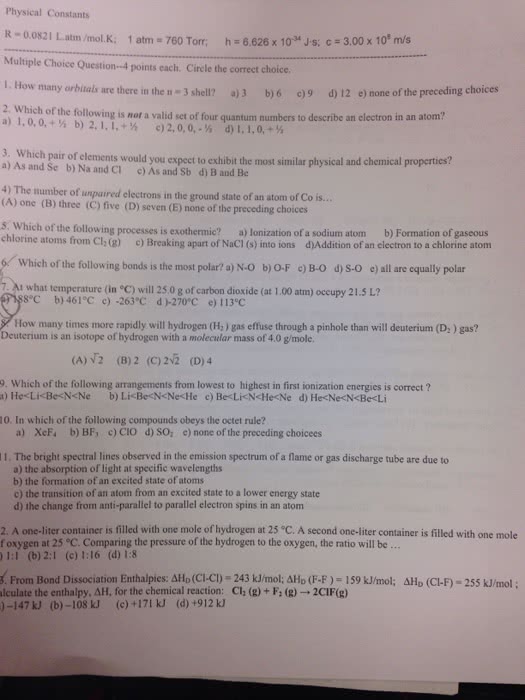CHEM 1050 Lecture 3: Note 3 Thermochemistry Part 3.pdf
17 views15 pages
11 Feb 2015
School
Department
Course
Professor
Document Summary
Bond energies in covalent molecules (refer to section 9. 11 in text) Covalent bonds bonds resulting from the sharing of electrons between atoms. e. g. , (cid:60) (cid:60) (cid:60) (cid:60) The distance between the atoms is the bond length (depends on the atoms). Not all covalent bonds are equal they involve different nuclei and different electron distributions, (e. g. , c c, c=c, c c, etc. ). Hence the energy to break bonds can differ. Energy required to break a mole of bonds in the gas phase (does not hold for liquid or solid state). Note: products are neutral species not ions! is always positive, since enthalpy change is associated with breaking a covalent bond (energy must be supplied). is a measure of the strength of a covalent bond. We can then say that the bond enthalpy of h2 is 436 kj. Note: hbd = be(h h) = +436 kj 2 hf [h, g] Hf [h, g] = +436 kj/mol 2 = 218 kj/mol.
Get access
Grade+
$40 USD/m
Billed monthly

Homework Help
Study Guides
Textbook Solutions
Class Notes
Textbook Notes
Booster Class
10 Verified Answers
Class+
$30 USD/m
Billed monthly

Homework Help
Study Guides
Textbook Solutions
Class Notes
Textbook Notes
Booster Class
7 Verified Answers
Related textbook solutions
Chemistry: Structure and Properties
2 Edition,
Tro
ISBN: 9780134293936
Basic Chemistry
5 Edition,
Timberlake
ISBN: 9780134138046
Principles of Chemistry Molecular Approach
4th Edition,
Tro
ISBN: 9780134112831
Chemistry: Structure and Properties
2nd Edition,
Tro
ISBN: 9780134293936
Principles of Chemistry Molecular Approach
3rd Edition, 2014
Tro
ISBN: 9780321971944
Chemistry: A Molecular Approach
3rd Edition,
Tro
ISBN: 9780321809247
Chemistry: A Molecular Approach
5th Edition,
Tro
ISBN: 9780134874371
Principles of Chemistry: A Molecular Approach
4th Edition,
Tro
ISBN: 9780134895741
Chemistry: The Central Science
14th Edition, 2017
Brown
ISBN: 9780134414232

